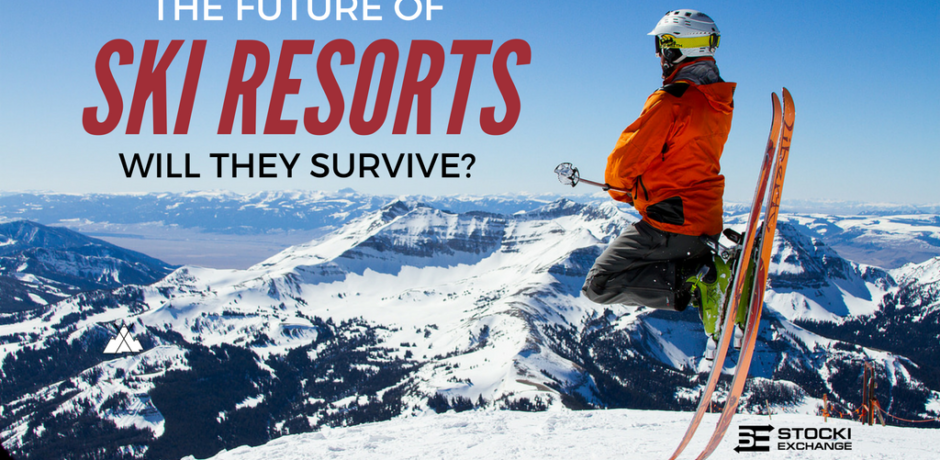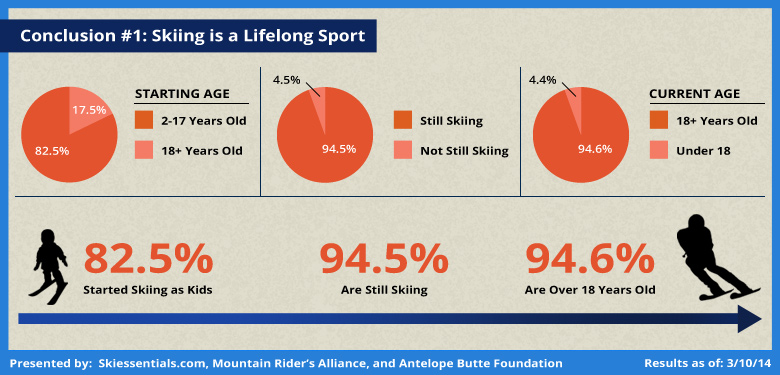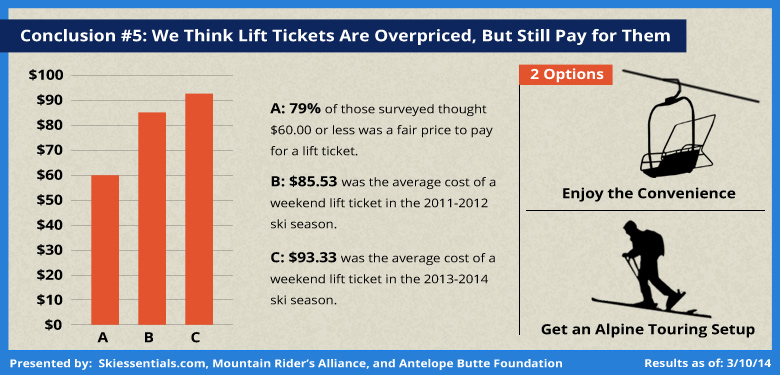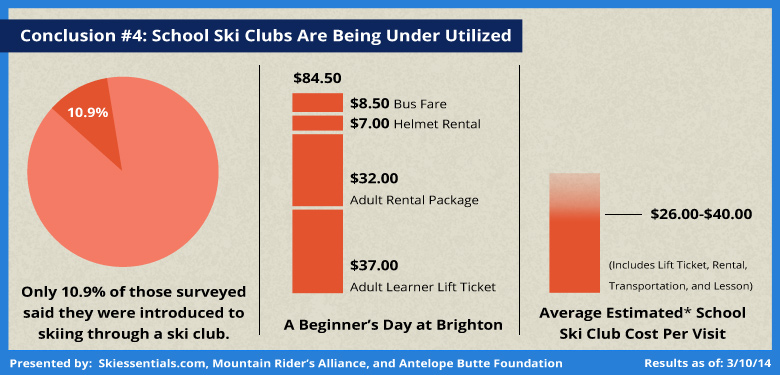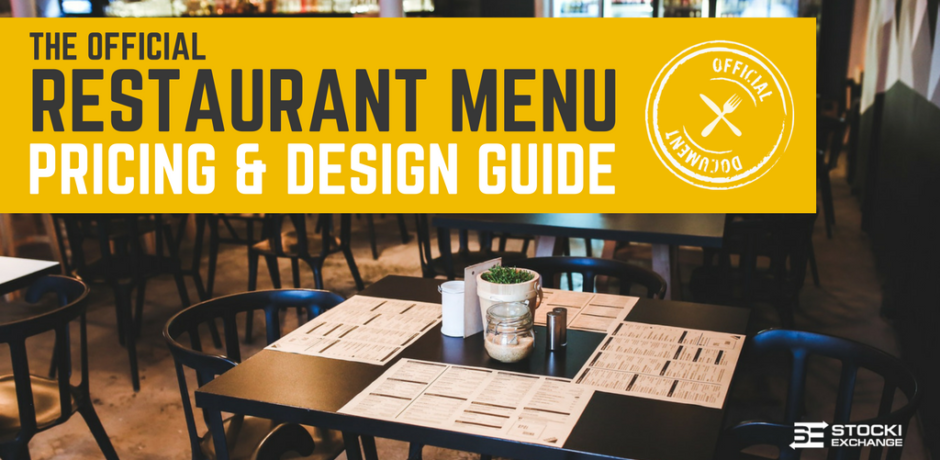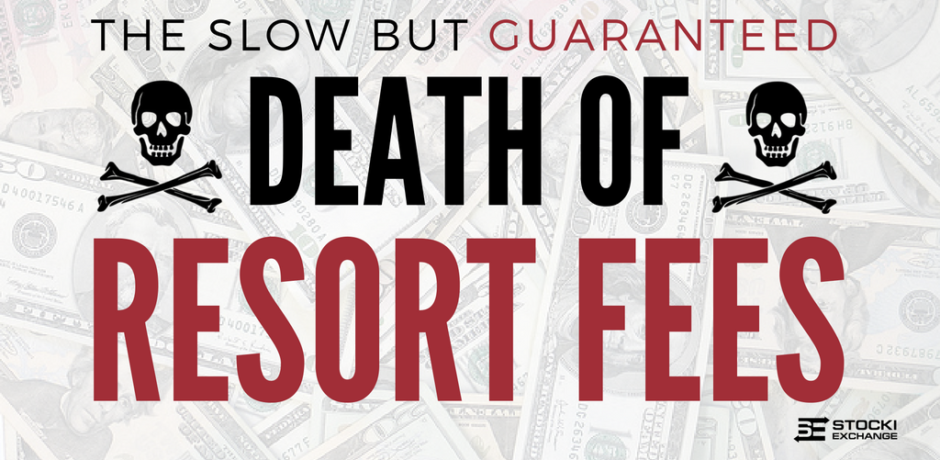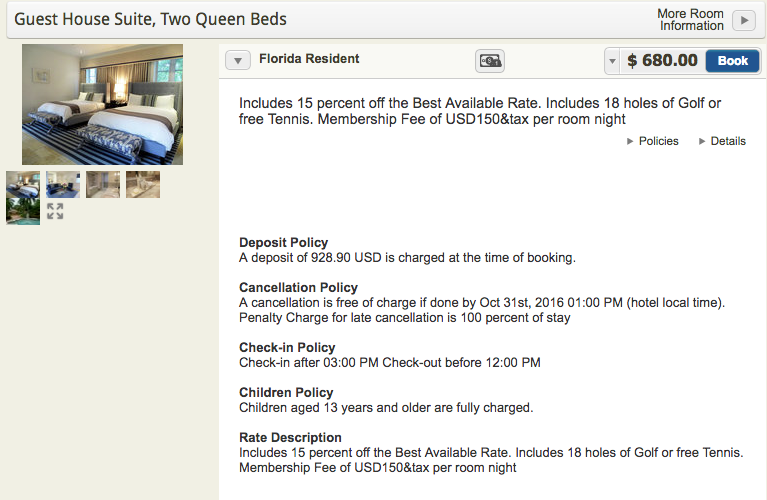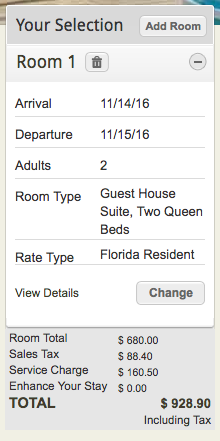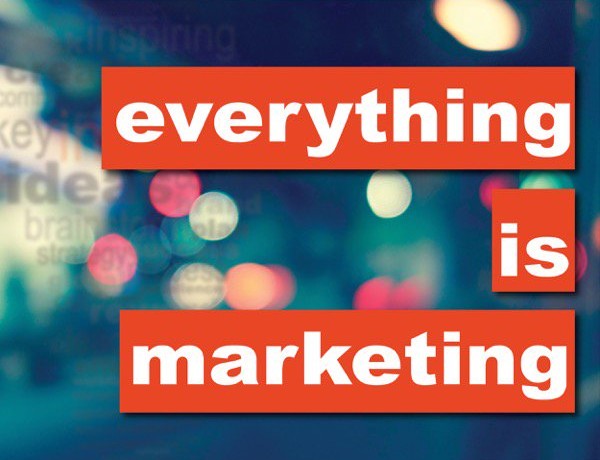Category: Marketing
Over the past decade and a half, regional ski resort visits throughout the U.S. have been largely stagnant or in decline. Per Snowsports Industries America 2015 Fact Sheet, nationwide visits peaked at 60.5 million in the 2007/08 season and dropped to an almost 15 year low of 52.8 million in the 2015/16 season. Why is this and what does the industry need to do to remain viable long-term?
Lack of Early Adoption
First and foremost, early adoption is key in determining whether or not a consumer will EVER get involved. In a 2014 Ski Essentials survey, almost 32% of people started on the mountain between the ages of 2-5 and a whopping 82.5% began before the age of 18. Of those that started before the age of 18, 94.5% are still skiing.
Sadly, even high retention among those that get started early may not be enough to save snowsports long term. In the late 70’s there were roughly 735 resorts in the US. By the 2013 season, that number was down to 470, says Unofficial Alpine. That means the nearest ski hill is getting further and further away from the average family, making it even more of a hassle to get involved for those who are interested.
Exorbitant Costs
Above and beyond issues around interest and access, the increasing cost of participation has also put a damper on consumer behavior. In the 2013/14 season, the average weekend lift-ticket price was $93.33 per Ski Essentials. Factor in equipment rentals and food and you’re talking about well over a $150 day…per person! Now you may be thinking, “yeah, but those are Colorado prices,” and you would be correct. But cutting the number in half for smaller local hills still makes a day trip for a family of four roughly $300. Numbers like these are a still a significant investment for many families and a tall barrier to entry for new consumers interested in giving the sport a try. To take it a step further, look at what it would cost to BUY all new equipment for a family of four. Not to mention having to replace equipment for growing kids around every two seasons. The total costs skyrocket.
Solutions
First and foremost, ski resorts must work to build relationships with local schools if they want to help groom the next generation of lifetime skiers. Roughly 11% of those surveyed by Ski Essentials said they were introduced to skiing through a ski club. Beyond that, the average estimated ski club trip costs between $26-$40 unlike the typical family trips mentioned above. That means there are swaths of youngsters out there with the potential to get into skiing while young and at an affordable rate. I call that untapped potential.
Furthermore, those small and medium “beginner” resorts need to rethink the overall costs of a day of skiing. Discounted lift tickets are helpful, but the price of equipment rentals and food often make a seemingly affordable day anything but.
Second, everything possible must be done to keep small local ski hills open. They are key to ushering new skiers into the fold. So much so, that over 60% of skiers surveyed say they learned on local hills with less than 1600 feet of elevation. And once they’re involved, they tend to stay involved for life. Many of these ski hills are community funded and/or non-profits. If you’re passionate about snowsports, make sure you advocate for continued funding for these type of local ski hills and help with fundraising efforts to keep them alive.
Industry consolidation will play a key role here as well. If large players like Vail Resorts continue to purchase and invest in small properties (like they did recently with Wisconsin’s Wilmot Mountain) there may be hope for the little guy. Investments in diversifying entertainment options at these properties creates viability by bringing in much-needed non-skiing revenue. However, this type of consolidation can also lead to price increases, which could ultimately be detrimental to the industry as a whole, as research shows that cost of entry is a large barrier to new consumers.
Finally, the industry must embrace dynamic pricing as quickly as possible. This means taking everything from the weather to on-premise hotel inventory into account when setting prices vs. working with a dated static pricing structure. It means offering discounts for those who purchase lift tickets in advance, raising prices as the date approaches, and potentially cutting them drastically on days with low turnout or poor weather forecasts. While this sounds complicated, companies like Liftopia have been helping resorts implement this model for the past decade. Mammoth Mountain Ski Area told Bloomberg that it increased its advance sales by 15% the first season it implemented the model.
Only time will tell if the industry is going to respond appropriately. Will the major players in Colorado put today’s profits ahead of nurturing tomorrow’s customers?
Do you work at a ski resort and have an opinion you would like to share? Leave a comment below or email me at john@stockiexchange.com.
Your menu is one of the most effective tools you have at your disposal when it comes to running a successful and sustainable restaurant. Pricing issues, confusing layouts, and menus with too many (or too few) items can lead to frustration for your guests as soon as they sit down. Any of these issues can wreak havoc on your ability to create market-leading check averages. Below I’ve included a few menu pricing & design tips and tricks that I’ve accumulated over the years.
Eliminate Ambiguity
Have a clear pricing separation between appetizers and main courses. Guests make significant assumptions about your dishes based on price alone. If all of your appetizers are $12-$16 and your mains are $12-20, re-think where your dishes fit. You have to strike a balance between price and portion.
Pro-tip: Examine your appetizer offerings closely. Include some to enjoy individually as well as some that are meant to share. Make sure you note which are which. This make ordering much easier for groups.
Highlight the Details
These days, it seems like everyone has a food allergy or some kind of intolerance to something. Well, everyone likes to act like they do anyways. Go out of your way to mark dishes that cater to specific dietary restrictions (vegetarian, vegan, gluten-free, etc.). This helps direct guests towards dishes that fit their diet without staff involvement.
Pro-tip: You can have fun with this. While dietary restrictions and spice-level are no-brainers, things like the region a dish is from, portion-size,and protein type could all be noted using creative indicators as well.
Form vs. Function
Have you ever sat down at a restaurant with menus the size of a road map? You were probably as annoyed as I was the last time it happened to me. Unique and beautiful menus are great, but they can’t be so unruly that place settings need to be moved just to set them on the table. At that point, they’re taking away from the experience instead of adding to it.
Focus on Photography
Frankly, photography isn’t a fit for every every menu. But, it goes without saying that if you’re going to do it, do it right! Invest in a professional photographer and utilize the images wisely. If you have a unique dish, focus on it. Sometimes a written description just can’t do it justice.
Pro-tip: Be sure to include photos of appetizers and desserts. People eat with their eyes and it’s a lot more difficult for guests to overlook those money makers when they see how delicious they look.
Looking for a great food photographer? Check out Green Frog Photo!
Separate Dessert Menus
Give your kitchen the ability to offer unique treats by pulling dessert off of your regular menu. This makes it easier to update on the fly. Doing this also gives your service staff additional opportunities for suggestive selling.
Pro-tip: The dessert tray is a thing of the past. They’re too hard to maintain and can do more harm than good. Avoid them!
Don’t Forget the Kiddos
Like photography, kids menus aren’t for every establishment. But if you’re going to have one, do it right. Make them as interactive as possible. Anything you can do to help parents keep their children occupied makes their experience better…not to mention the experience of the diners around them.
Pro-tip: Crayons are great. Paper tablecloths and crayons are better if they fit into your restaurant theme!
Wrap Up
In general, restaurants need to have the less is more policy going forward. Having fewer items that you knock out of the park allows you to deliver a fresher, more consistent product day in and day out. That allows you to keep your food costs and prep time down and makes menu analysis much, much easier. Proper use of your digital POS allows you to see what sells, when it sells, and how much of it you sell so you can optimize your menu over time. This is how you figure out what people like, what’s most profitable for you, and what’s costing you money.
I would love to get your feedback on menus you’ve either loved or hated. Reach out to me at John@StockiExchange.com.
Have you noticed how those super low hotel room rates you see advertised never really seem to be what you actually pay? Taxes aside, one of the biggest contributors to this are resort fees. So much so, that The Washington Post says U.S. hotel guests paid an estimated $2.7 billion (yes, billion with a B) in resort fees in 2015!
What are Resort Fees? Where did they come from?
If you’re not a millennial, there’s a good chance you remember when resort fees didn’t exist. You probably remember being able to dispute them when they started popping up in the early to mid 90’s as well. Unfortunately, times have changed. These fees, which used to be added to your stay for the upkeep of luxury amenities at high-end resorts, are now found virtually everywhere.
Many of the perks that resort fees were designed to pay for at luxury properties such as beach clubs and tennis courts still exist. However, more and more hotels are tacking on resort fees as an easy way to generate additional revenue. During our research, many hotels said the resort fees provided for amenities such as faxing, in-room safes, local phone calls, beach and pool access, that were previously included in the room rate. In Las Vegas, for example, hotels use many of these reasons to justify fees as high as $32 a day at some properties.
Here’s a great example of one hotel advertising an extremely low rate, then tacking on a 42% resort fee.
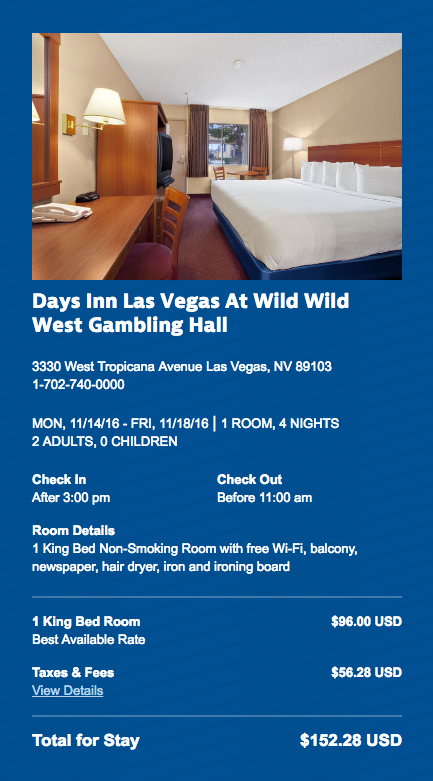
At the opposite end of the spectrum, here’s a $680 per night island property in Miami that charges a resort fee of $150 per night (plus tax), which comes out to 23.6% of the total room charge. The property doesn’t mention that fee anywhere on their website and when called, said it covered access to all of their facilities and a golf cart for guests to use while on the island. When pressed on it over the phone, they actually called back the next day and offered to waive the resort fee, offered me the Florida resident discount rate even though I live in Michigan, and the only stipulation was that my reservation would be non-cancellable. I guess it’s not mandatory after all…
Why Do Hotels Still Charge These Fees?
The reasons why many hotels still charge a resort fee are pretty obvious:
- It’s legal…as long as they disclose the fees before you complete your reservation
- It allows hotels to deceptively lower their advertised room rates then make up the revenue by tacking on resort fees later
- Consumers continue to pay them without questioning what they’re getting in return for their money
Challenging the Status Quo
If a property really wanted to, they could offer a stay for $50 a night and charge a $100 resort fee as long as they disclose it prior to booking. Talk about a bait and switch! Cable and internet providers are the one of the only other folks out there charging their customers fees like this with minimal transparency. And, we all know how much everyone loves dealing with them. This deceptive practice has gotten so bad that the FTC is considering changing its current policy as many consumer advocate groups argue that it is unfair and deceptive.
Websites like ResortFeeChecker.com and ResortFees.com are gaining momentum because travelers are tired to being taken advantage of. In a recent study, roughly 1 in 10 travelers to Las Vegas actually changed where they planned to stay in order to avoid paying resort fees. In my opinion, hotels have three options if they want to see continued success as their guests become more discerning:
Option #1 – A La Carte Service Fees and Packages
If properties want to keep resort fees in place, they have to acknowledge that it takes unique and luxurious upgrades to justify them as well as a market willing to pay for them. If people don’t take advantage of those perks, the property should offer to waive the fees. A recent study confirmed consumer sentiment for this approach.
Option #2 – Roll the Resort Fee into the Room Rate
Hotels could drop the resort fee entirely and roll it into the room rate. Let the consumer know exactly what they’re paying for and allow them to make their own decision, with no hidden fees/charges. The same study referenced in Option #1, found that 67% of consumers preferred this type of bundled pricing. Truly savvy brands will utilize this as a marketing opportunity to explain higher room rates and differentiate themselves from competitors who still nickel and dime their customer base.
Option #3 – Do Nothing While Competitors Choose Options #1 & #2
Hoteliers that refuse to change will continue to benefit from unsuspecting, price-conscious consumers…for the short term. However, many hotels already see the changes in consumer spending habits and have updated their pricing model to mirror the options above. If this consumer behavior trend continues, businesses who are slow to respond to the change will likely see a decline in revenue until their pricing model better reflects consumer demands.
The Hard Truth
Quite frankly, hoteliers are going to need to work harder. Charging resort fees has been an easy revenue generator requiring little to no effort for too long. As consumers become more educated, brands that continue to utilize them will be risking their ability to build long-term brand loyalty, a key performance metric for the travel industry.
Sadly, unless the practice is deemed a form of deceptive advertising by the FTC, many hotels and resorts will likely stay the course as they are too tempted by the easy revenue. Even those who want to change may be too cash-flow sensitive, requiring the short-term revenue resort fees provide just to stay afloat. Additionally, properties in highly-competitive resort destinations like Las Vegas and Miami, where resort fees have been the norm for decades, will likely be the last to change as it will put them at a disadvantage price-wise in online search results. To survive, these hotels will likely continue to advertise low rates that undersell the market and focus on a volume-driven strategy, targeting the most price-conscious consumers.
Unfortunately for them, transparency is the currency businesses trade in today. The internet provides everyone with more options and information than they know what to do with. Consumers, even cost-conscious ones, are deciding they don’t want to do business with organizations who aren’t honest and upfront with them.
If you’re a consumer who has successfully challenged these charges or a hotelier who is considering changes to your fees, I would love to get in touch. Email me at John@StockiExchange.com or contact me online here.
Are you sick of paying Online Travel Agents (OTAs) upwards of 25% for making reservations at your hotel? Looking for ways to drive more direct bookings online? Here are 3 ways your hotel can better compete against OTAs to drive more revenue through direct bookings.
(more…)
Recently, I had the opportunity to be featured on the Bidsy’s Small Business Society Podcast with Rob Barisoff! Listen to a quick 30-minute podcast where I talk about my experience traveling overseas while working for luxury European hotelier Kempinski Hotels. We then discuss what it takes for hospitality providers to consistently deliver on their brand promise! (more…)
Stocki Exchange Founder, John Stocki, recently joined the crew for Episode #81 of the One Thing Straight Podcast and talked about the latest marketing buzzwords. (more…)
Here’s a scenario.
You’ve thought about opening restaurants for some time now. You heard one just closed down and there is a super cheap lease available. Realtor tells you that it won’t last long as it’s a super high traffic area. It even includes all their kitchen equipment and dining room setup. BOOM. Cash in that 401k early and sign on the dotted line. You’re now a restaurant owner. But now what? (more…)
Big shout out and Thanks You to Eric Hultgren (@polymathandvine) from MLive for inviting me to join him on the #EverythingIsMarketing Podcast! We chat about the upcoming 2016 year and what it holds in store for the travel industry who is desperately trying to target the lucrative millennial market! Subscribe to the Podcast on iTunes to never miss an episode and listen to the show below! (more…)







